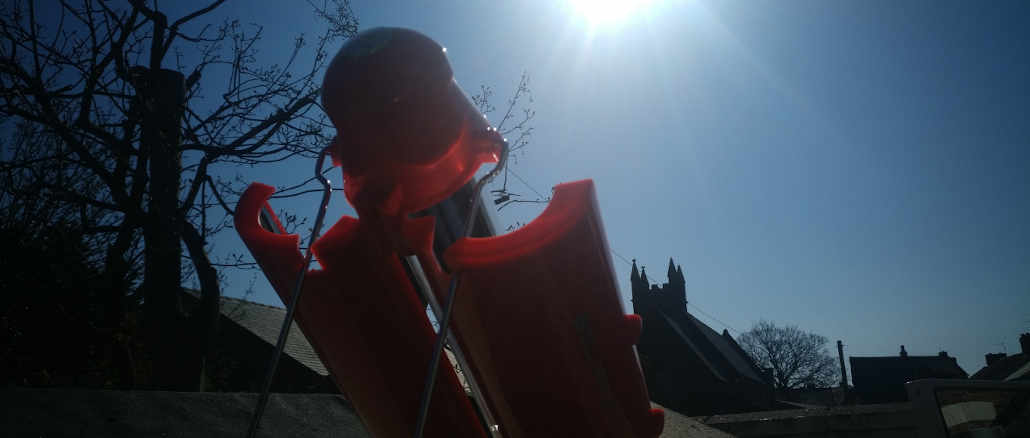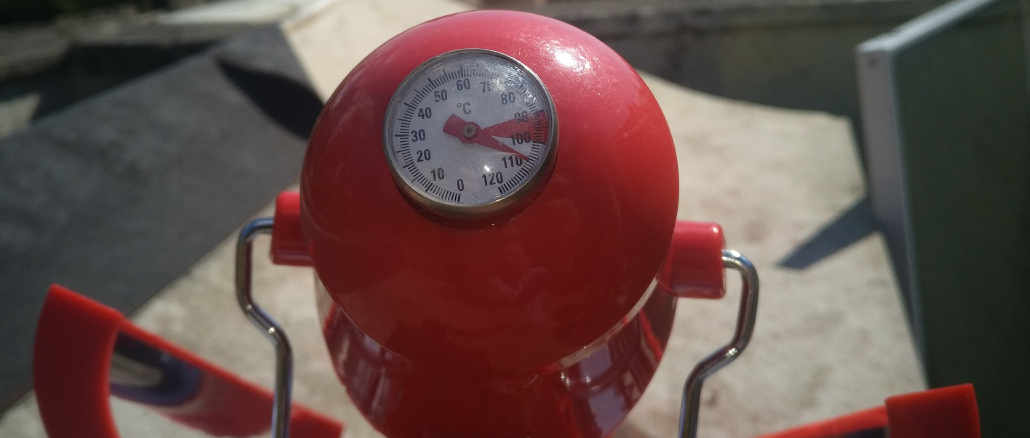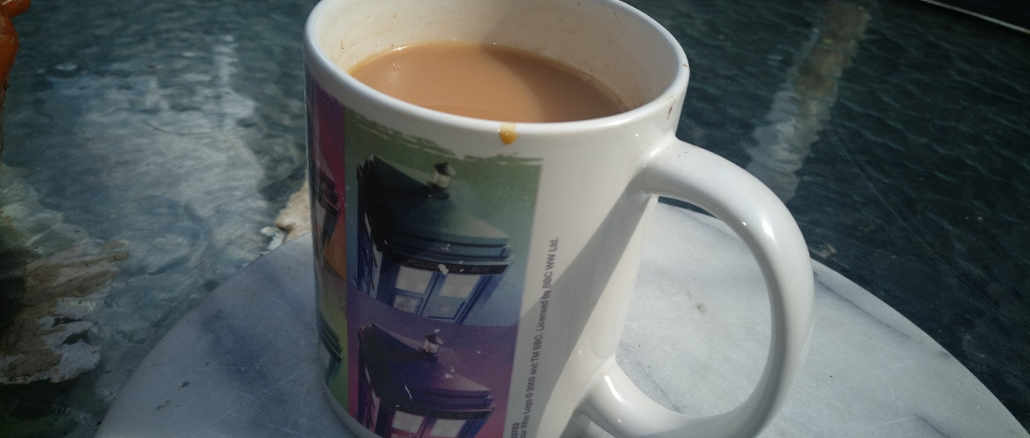Sun Worshipper - Off Grid With A Solar Kettle. Tried and tested

The Crow loves the idea of sustainable living - of harvesting the energy of renewable resources to power our everyday needs.
We have visions of wind farms stretching off into the distance to power the households of the UK: of tidal generators topping up the national batteries, and of vast banks of solar panels plating the snow depleted mountain tops in order to provide the electricity to the now-defunct ski lifts.
It will happen of course. Probably not in this bird’s lifetime, but I see a far off future where humanity is completely freed from the shackles of long dead and liquified flora and fauna, and able to live our lives without doing irreparable harm to the planet. We’re getting there, but the progress is slow.
On a personal level, I try to damage the environment as little as possible and use low power devices and renewable energy sources whenever it’s practical to do so.
There are trade-offs of course. Taking UK based caravan holidays instead of flying to the other side of the world means that I drive a big Diesel 4x4, because it’s just not possible to tow a caravan through a muddy field on a bicycle.
My last UK break was a two week off-grid tour of Scotland. It was great. We relied on bottled gas for cooking and making tea, and a leisure battery topped up by solar power for everything else.
But it would be even better if we could reduce our reliance on gas even further.
And so, in preparation for this year’s many excursions to the campsites, fields, and lay-bys of this sceptered isle, we invested in a solar kettle from Contemporary Energy. It cost about 30 quid, which is what we would probably pay for a ‘normal’ kettle.
How do solar kettles work?
The sun heats things up - you can go outside and test this if the weather’s nice enough. Stand facing the sun (with your eyes closed for safety), then step into the shade. Did you notice a temperature drop? There’s the proof.
Black things absorb heat better that lighter coloured things.
The core of the solar kettle is a black tube with a mirrored inside.
Fold-out mirrors reflect sunlight onto the black exterior suface of the tube.
The water inside the tube heats up, and the mirrored inner surface prevents heat from escaping.
That, in a nutshell, is it. You may be able to find more details on the Contemporary Energy website, although it seems to be down more often than not. Maybe it’s solar powered.
Time for a brew
One thing the box doesn’t tell you is that the solar kettle takes around two to three hours to heat water to boiling point. If you’re gagging for a brew right now, tough luck.
I unfurled the wings of the kettle this morning and set it facing the sun. So far so good - The temperature is currently five Celcius , but the sun is bright and overhead. Two hours later, and the built in thermometer showed me the water temperature was up to 70 degrees - good for coffee, but not for tea.
A quick check just now indicated that it was approached a scorching 110 Celcius. How can it reach this bonkers temperature? It’s because the lid is sealed on tight and the rising pressure prevents to water from turning to steam. GCSE physics for you right there.

It goes all the way up to 120!
Carefully unscrew the top and you have enough hot water for three cups of tea - and you only needed to wait three hours for it.
In any given three hour period, The Crow has usually had six cups of tea.
But it’s not so dire as it appears.
Leave the Solar kettle outside overnight so there’s hot water when you wake up, and use it to fill a thermos flask which will provide you with enough hot tea until the solar kettle has had enough time to heat up again.
With careful planning, limiting your tea intake, and ensuring that there is one solar kettle per tea drinker, it is entirely possible to go for weeks without touching a conventional kettle at all.
I’m not actually going to try this - at least not today, when the temptation of mains electric is so close to hand, but next time I’m off grid, I will certainly give it a go.
Design choices
I like the solar kettle - I really do. It’s a neat design, with the mirrored wings folding out neatly, the analogue thermometer and its rugged compactness.
But the mirrors themselves are mirrored sticky plastic. The wings are plastic, and the lid is plastic.
I can’t help but think that the solar kettle would be more ecologically sound if some renewable material (or at least a non-plastic) one had been used in its construction. Bamboo maybe.
It’s a small gripe with what is, for a disciplined and solo tea drinker, a potentially excellent product.

Perfect.
This site is hosted on a Raspberry Pi 4B in the author's living room (behind the couch). If you fancy building a website, but would prefer not to have hardware cluttering up your house, you can get reasonably priced hosting from BlueHost
On the other hand, if you're worried about being followed online, consider using PureVPN to cover your tracks.
These are affiliate links. Obviously. If you're feeling generous, you can buy me a coffee.



